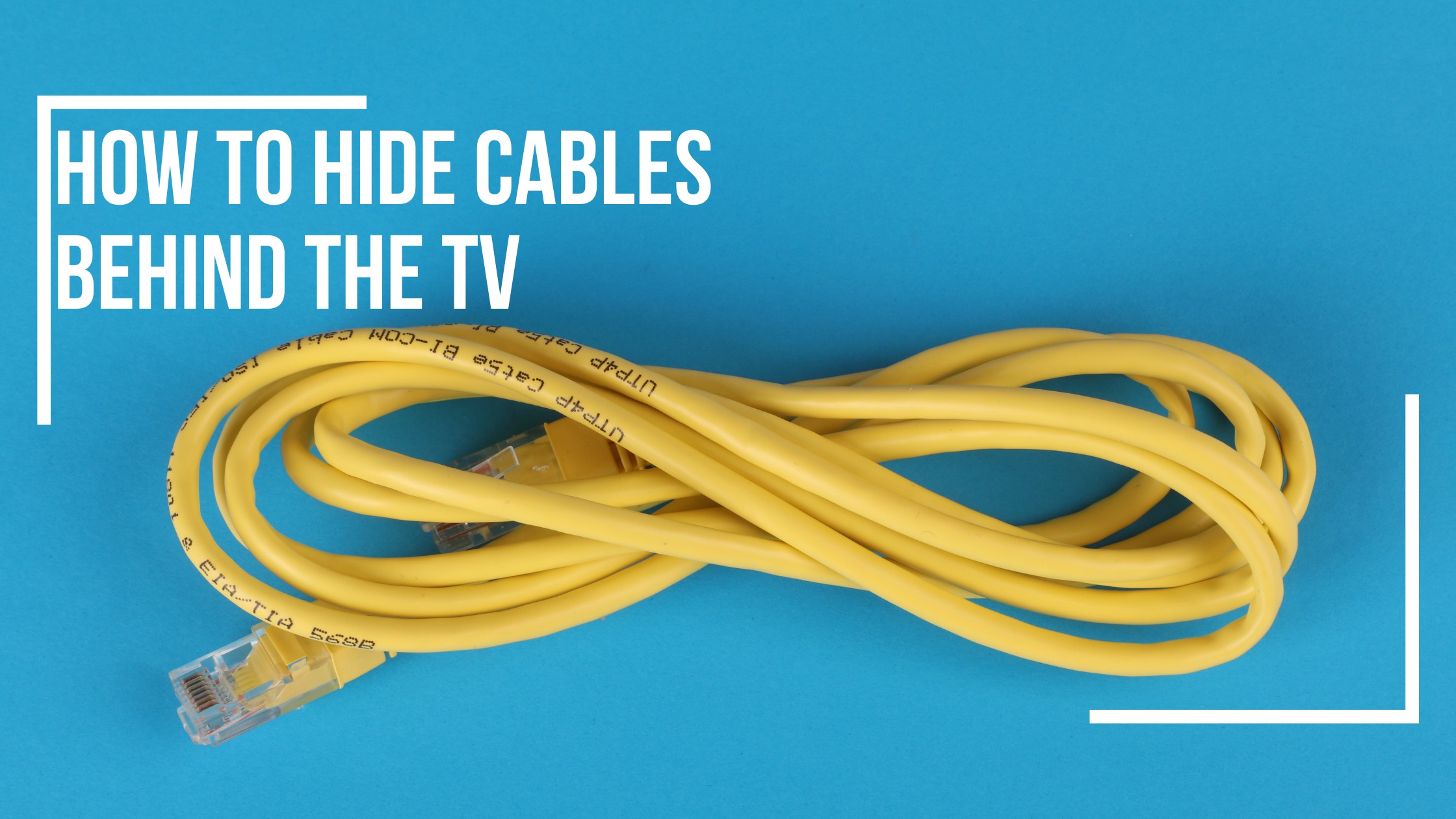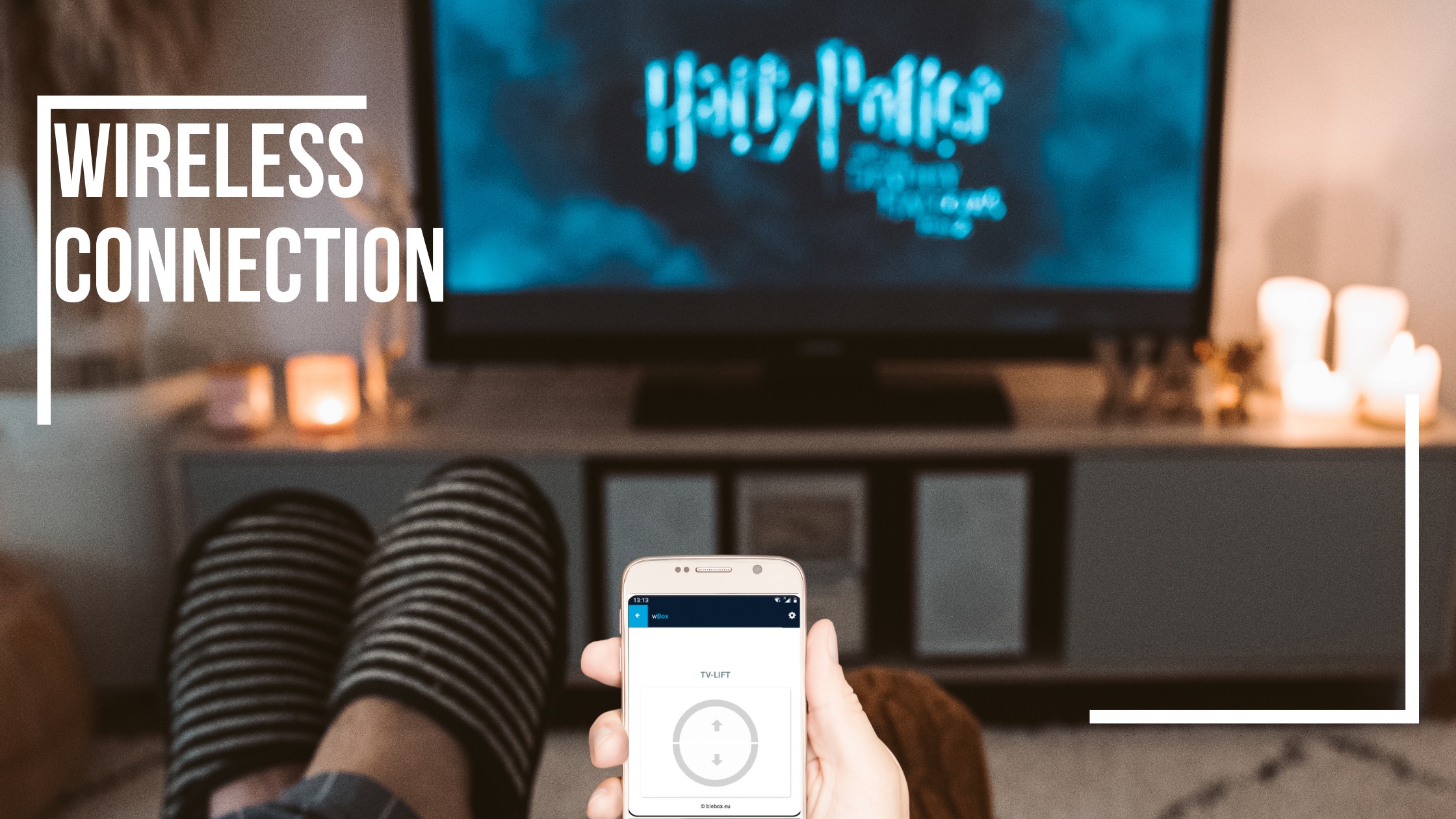
Tangled cables behind the TV look unsightly and can be dangerous. Hiding cables means, among other things, protecting against children and animals that might catch on tangled cables and throw the TV set off. In such a situation, a torn-out electrical socket is the least of your problems. In this article, we have put together a handful of tidy tips on how to hide your TV cables.
A duct or groove in the wall
Carving a groove in the wall is an apt solution if you’re looking for ideas on how to hide your TV cables in the wall of your new home. In the case of an already functioning wall, this would require deep chipping off the plaster and reapplying it. The combination of old and new plaster will stand out. If you have no choice but to chisel off the plaster, you can opt to paint the section of the wall that has been re-plastered. As a result of such interference, cracks may appear on the wall in the future. The mesh placed under the plaster will help to reduce these cracks and strengthen the structure.
Does the size of the groove matter? Ideally, it should be as small as possible, but it should be no more than a decimetre wide. Its depth has to be big enough to insert cables comfortably. The hole where you place the cables inside the wall can extend from the TV to the socket. Regardless of the length of the channel, make sure it has a ventilated inlet and outlet to avoid overheating of the cables.
Hiding cables in the wall
You can use a cable duct made of PVC tubes to hide cables professionally in the wall. You can install the channel yourself, but it’s better to ask an electrical service for help. An experienced fitter will know how to shorten the cables and will professionally perform all the necessary service work to eliminate the risk of electric shock. In order to hide cables, you can also use corrugated plastic pipes. Such pipes allow for easy hiding of cables inside, and the mounting foam will ensure their certain fastening in the wall.
Hiding cables without chiseling the wall
Drilling or chiselling into walls can destroy the decoration that is already there. To aesthetically hide TV cables, you do not have to destroy the wall. A practical solution is to cover the cables with panels or other material. You can cover the whole wall with new material, change its decoration, or – if you are not ready for renovation – cover only a narrow fragment, where the cables run. To cover the whole wall, structural decorative panels, wooden panels, or their cheaper version made of MDF cladding are perfect. The space between the wall and the panel is sufficient to hide problematic cables.
Masking TV cables on the wall
The use of a cable cover is very convenient and aesthetically pleasing. Horizontal or vertical masking of hanging cables is practical and prevents them from tangling. The cable cover is easy to install and usually opens easily. It also keeps the hidden cables easily accessible, which is a huge advantage if you need to get to them to replace them or add cables for a new device like a set-top box or aerial. In most cases, the masking strip can be painted. The question often arises as to whether it is worth masking the cables from the TV. It depends on your expectations, but we think it is a great idea for the aesthetics of the interior.
Cable organizer
In the electrical industry, organizers are a fairly simple and universal solution. They do not require any additional work – it is enough to hide the cables inside. When choosing an organiser, you should be guided by its size and the material from which it is made. These must be safe materials intended for electrical installations, which will not melt or ignite. A great advantage of organizers is that they do not require an expert to install them, and easy access to the wires is a guarantee of convenience. They can be placed on the floor or anywhere where they will not be visible. In the K-Premium series, we use a patent that refers to the organizers – our cable guide lifts together with the TV, so loosely hanging cables do not distract you while watching your favorite reality shows.
Cable ties
If your TV comes to solo, without additional accessories like a console or recorder, you might just want to clip the cables together using cable ties. Popular tights are widely used for tidying up electronics. They are also usually made from non-conductive materials. Tights can also be used to attach cables to furniture or a TV lift – we use this idea on many of our TV lifts, such as the Rotolift.
Cables hidden in furniture
A TV cabinet with a cable panel or gland is a great way to hide not only your cables but also your TV. Our K-Eco TV lifts are ideal for fitting into the furniture. So the cables are invisible and the TV doesn’t collect dust when it’s not in use. The only thing you have to remember when building furniture is to fix the lift well and leave ventilation holes.
Cables in the other room
Depending on the room, the TV may be attached differently and have a different purpose. If you have a TV in the kitchen or bathroom, you should take care to protect it from moisture. In the living room or bedroom, it’s a good idea to run the cables primarily to achieve a good visual effect. You can fasten an extension cable to the wall directly behind the TV or go a step further – if you need to run cable TV or aerial cables to a neighboring room, for example, run them through a hole in the wall. This invasive solution works especially well if the wall in question is not a thick load-bearing wall. You can hide the cables in furniture or an organizer in the other room, and plaster the front part of the wall, cover it with plywood or plasterboard.
Wireless connection
Many of the extra devices you connect to your TV also have ugly cables. Cables for your set-top box, speakers, or other audio equipment that are part of your home theater can be organized using one or more of the above methods. However, consider if your equipment allows you to connect to your TV using modern wireless technology. Also in our lifts, we use a convenient and reliable Wi-Fi module – K-SMRT, which allows you to connect wirelessly to the devices of your smart-home installation. Another convenient connection is Bluetooth technology.
Design from cables
Exposing power and antenna cables can be an opportunity to get creative. Cables can be glued to the wall, creating a creative pattern. Such decoration is a labor-intensive activity, but for a true artist, even the wiring can be the material from which to create a real masterpiece.



Recent Comments